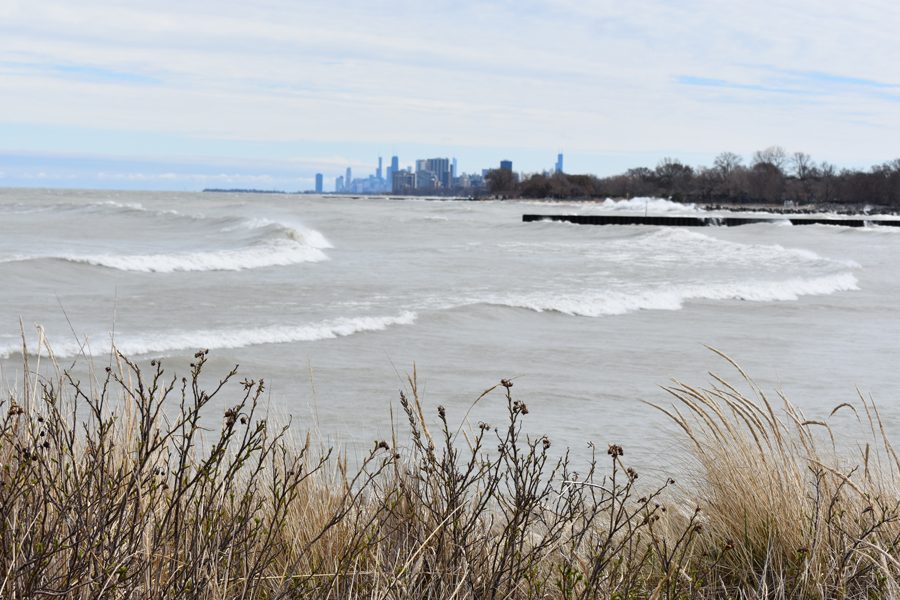Though group identifies contaminants in Evanston’s drinking water, city says water is safe
Daily file photo by Emma Edmund
Lake Michigan. Lake Michigan is Evanston’s water source.
November 5, 2019
A nonprofit’s report on contaminants in tap water said Evanston’s supply contains nine substances at levels that exceed its standards, but the city says this is not a cause for concern.
The Environmental Working Group — a nonprofit that aims to provide healthier environments — released its updated tap water database that analyzes data from 50,000 utilities in 50 states for 525 chemicals. The water quality tests EWG uses were conducted between 2012 and 2017, and the group found that 284 chemicals were detected in U.S. drinking water.
The group says federal laws regulating chemicals in drinking water — the Safe Water Drinking Act and standards set by the Environmental Protection Agency — have not been updated in 20 years. Congress enacted the Safe Water Drinking Act in 1974 and was last amended and reauthorized in 1996.
“The regulatory system meant to ensure the safety of America’s drinking water is broken,” the group said on its website. “The inexcusable failure of the federal government’s responsibility to protect public health means there are no legal limits for more than 160 unregulated contaminants in U.S. tap water.”
EWG identified nine contaminants in Evanston’s drinking water that exceed its guidelines, including chloroform and nitrate. Despite the EWG’s findings, Evanston has reported clean drinking water in 2018 based on standards set by the EPA and Illinois. There were no violations cited in the report.
The report said substances that the EWG detected were also detected in the city’s tests, though the levels did not violate federal or state standards.
Darrell King, Evanston’s water production chief, said many of the contaminants that EWG listed as being above their own guidelines are actually much lower than EPA standards.
According to the report, the EPA said the quality of water in Lake Michigan has vastly improved over the past 25 years, and all 63 miles of Illinois shoreline are in good condition. The report detected substances including fluoride, sulfate and hexavalent chromium, which can come from several sources.
The report said the contaminants can come from storm runoff, livestock operations and pesticides. It added that the main threats to Evanston’s source of drinking water — Lake Michigan — are pollution from air, rain and snow, as well as industrial runoff.
King said he trusts the EPA’s regulatory process regardless of EWG’s assertion that the standards need to be updated. He said EWG’s limits are “non-enforceable goals.”
“I’m very happy with the water quality here in Evanston,” King said. “We meet and exceed all standards of the Safe Drinking Water Act. I’m excited about that.”
Email: [email protected]
Twitter: @sn_handler


